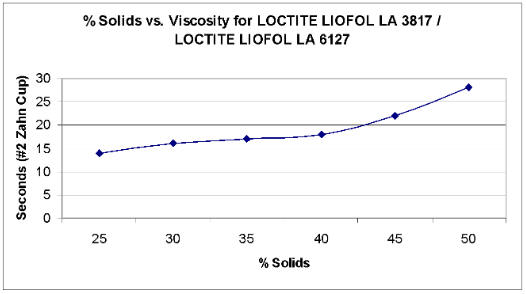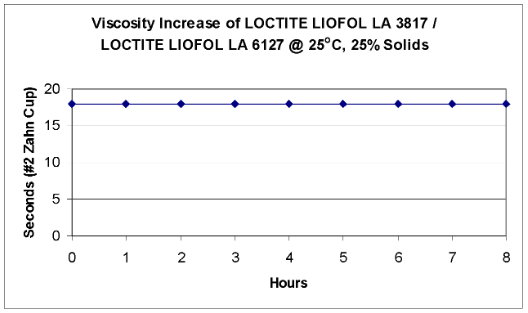Enhanced TDS
Identification & Functionality
- Supplied By
- CASE Ingredients Functions
- Technologies
- Product Families
Features & Benefits
- Labeling Claims
- CASE Ingredients Features
Applications & Uses
- Markets
- Applications
- Segments
- Applications
- Application Method
- Compatible Polymers & Resins
- Compatible Substrates & Surfaces
- Adhesive & Sealant End Applications
- Recommended Applications
Target Application
- Designed for high performance, film/film and film/foil food packaging laminations.
- Its primary use is for foil and high slip laminations requiring heat resistance after a short cure time.
- Caution: Due to the wide variability of film additives, materials, surface conditions, process conditions, and performance criteria, pretesting on your substrates and production equipment is required to determine if this adhesive system will meet all your needs.
Other Applications
- This adhesive also can be used for general-purpose food packaging laminations, health care, pharmaceutical and cosmetic applications.
- Application Information
Adhesive Mixing Instructions
% Running Solids
- Determine the adhesive viscosity based on your application method, cylinder selection and desired coating weight.
- Typically, a coating weight between 1.5 - 2.0 lbs/ream (2.4 - 3.3 gm/m2) is used for standard laminations.
- The chart below may be used for reference and is typical for LOCTITE LIOFOL LA 3817/LOCTITE LIOFOL LA 6127 when diluted with Ethyl Acetate.
- Determine the % running solids required:

Solvent Selection
- Select a dilution solvent. Urethane grade ethyl acetate is recommended. However, methyl ethyl ketone or acetone may also be used.
- Using a solvent other than ethyl acetate will change the viscosity curve shown above.
- Caution: Water content of the selected solvent should not exceed 300 ppm. High water content of the solvent can cause an undesirable reaction with the isocyanate that can alter the final performance of the adhesive mixture.
Dilution
- Calculate the amount of solvent required to dilute the adhesive and curing agent to the desired % running solids.
Adhesive Mixing
- Weigh the desired amount of adhesive into a clean, dry container.
- While stirring under slow agitation, add the total amount of solvent calculated based on the desired batch size. Stir slowly for approximately 10 minutes.
- Slowly add the curing agent to the stirring adhesive mixture. Stir for an additional 10 - 15 minutes. Cover the container to prevent additional solvent loss.
Processing Information
Application Method
- The recommended method of application for this adhesive mix is with a standard gravure roll coater.
- When using this type of conventional coating equipment, apply the adhesive at 25 - 35% TSC for best results.
- Depending upon the film or foil combinations, and the end use of the lamination, apply approximately 1.5 - 2.0 lbs/ream (2.4 - 3.3 gm/m2) coating weight of adhesive.
- Deep draw applications often require higher coating weights to accommodate the package elongation.
Drying
- Optimum drying conditions are dependent on the specific machine speed, coating weight, dwell time, and efficiency of the dryer.
- A system with good air volume and exhaust is more effective than extremely high temperature to remove the solvents.
- The drying conditions should correlate to machine speed:
- Example: 57 - 71°C at 165 fpm, 71 - 93°C at 500 fpm
- Dryers with multiple zones should be staged from a lower temperature in the first zone to higher temperatures in successive zones. This will facilitate solvent removal without adhesive skinning.
Combining Nip
- The lamination of the primary and secondary substrates should exhibit excellent initial tack when combined at heated nip temperatures of 140 - 176°F.
- Pressure and temperature of the laminating nip may require adjustment based on the appearance, degree of wrap angle, dwell time, and thickness of the substrates.
Pot Life
- Typically, this product at 25% solids in a closed container has a working time of 8 - 12 hours without substantial viscosity increase.
- However, solvent moisture content, relative humidity, temperature, solvent loss, and % running solids can all shorten the pot life of the adhesive mixture.
- Due to the chemical activity of the material, using material that is older than 8 - 12 hours is not recommended.

Curing
- The laminate can be further processed, rewound and slit after 1 - 2 days of curing at room temperature.
- To achieve complete curing, i.e., total resistance to severe environments; allow 7 - 14 days of storage at room temperature.
- Cure rate may depend on film combination.
Equipment Clean Up
- Clean up of the application station is accomplished with solvents such as ethyl acetate, methyl ethyl ketone, acetone, or toluene.
- Protective gloves should be worn.
- Recommended Mixing Ratio
Adhesive Curing Agent Mix Ratio by Volume 9.8 parts 1 part Mix Ratio by Weight 10 parts 1 part
Properties
- Appearance
- Clear to slightly hazy (Curing agent)
Regulatory & Compliance
- Certifications & Compliance
Packaging & Availability
Storage & Handling
- Shelf Life
- 12 months
- Storage and Shelf Life Information
- These products have a storage life of twelve months from date of manufacture.
- They should be held at normal warehousing temperatures and stored in the original, unopened containers.
- Containers of the adhesive or curing agent should not remain open for an extended period of time.
- Material from opened containers should be consumed within a short period.
- It is necessary to use all the adhesive, once the container is opened, unless there is means of purging the container with dry nitrogen.
- Handling Information
- The adhesive, as received, has chemically active Isocyanate groups that will react with water, alcohols, amines, and similar materials containing active hydrogen groups.
- Reseal containers and keep them tightly closed to maximize the storage life.
- Nitrogen purging of original containers will have a similar effect.
- Upon request, a DRIERITE® desiccant unit will be supplied with the first drum to ensure that dry air enters the drum as adhesive is withdrawn.
- Positive fresh air ventilation is necessary: otherwise use air supplied hood or chemical facemask.
- Avoid prolonged breathing of vapors and mists.
- In case of persistent coughing, call a physician.
- Keep adhesive away from heat, sparks and open flame.
- Avoid prolonged contact with skin.
- Wash hands thoroughly after using or before smoking or eating.
- Harmful or fatal if swallowed. If swallowed, Do not induce vomiting. Drink one or two glasses of water, and call a physician immediately.
